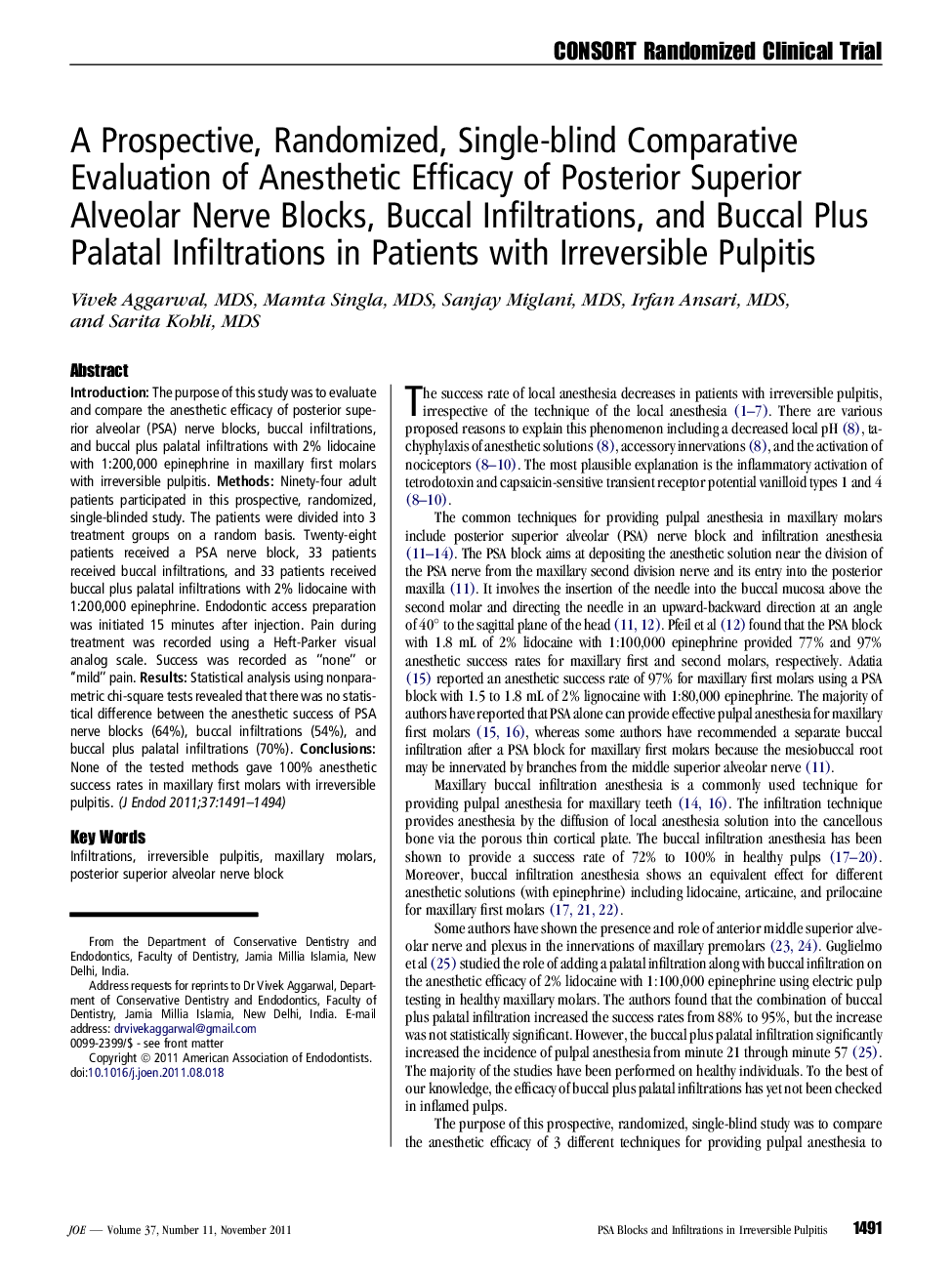| Article ID | Journal | Published Year | Pages | File Type |
|---|---|---|---|---|
| 3148856 | Journal of Endodontics | 2011 | 4 Pages |
IntroductionThe purpose of this study was to evaluate and compare the anesthetic efficacy of posterior superior alveolar (PSA) nerve blocks, buccal infiltrations, and buccal plus palatal infiltrations with 2% lidocaine with 1:200,000 epinephrine in maxillary first molars with irreversible pulpitis.MethodsNinety-four adult patients participated in this prospective, randomized, single-blinded study. The patients were divided into 3 treatment groups on a random basis. Twenty-eight patients received a PSA nerve block, 33 patients received buccal infiltrations, and 33 patients received buccal plus palatal infiltrations with 2% lidocaine with 1:200,000 epinephrine. Endodontic access preparation was initiated 15 minutes after injection. Pain during treatment was recorded using a Heft-Parker visual analog scale. Success was recorded as “none” or “mild” pain.ResultsStatistical analysis using nonparametric chi-square tests revealed that there was no statistical difference between the anesthetic success of PSA nerve blocks (64%), buccal infiltrations (54%), and buccal plus palatal infiltrations (70%).ConclusionsNone of the tested methods gave 100% anesthetic success rates in maxillary first molars with irreversible pulpitis.
